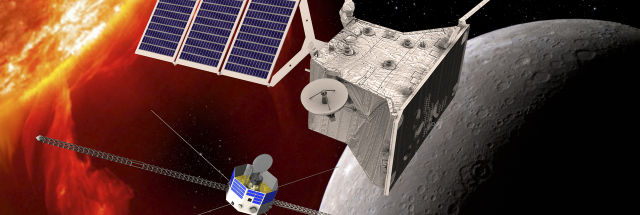In 1610, Galileo Galilei, renowned as the pioneer of modern astronomy, first laid eyes upon the magnificent rings of Saturn. His initial observations through an early, rudimentary telescope led him to describe these celestial features as resembling “ears.”
Now, centuries later, the marvels of Saturn’s rings are accessible to anyone equipped with basic astronomical gear.
Cosmic phenomenon
Yet, this grand sight has an expiration date set for 2025 – when Saturn’s rings will vanish from view, not once but twice. Composed of seven distinct rings, this cosmic phenomenon is believed to be formed from the remnants of comets, asteroids, and moons that ventured too near Saturn and were ripped apart by the planet’s immense gravitational pull.
The rings are also home to countless icy fragments and are shrouded in a layer of cosmic dust. Their exact age remains a topic of debate, though recent research posits they may be relative newcomers on the cosmic scene, having possibly formed a mere 400 million years ago – making them younger than a tenth of Saturn’s own age.
Invisible rings
Presently, scientists understand that Saturn’s rings are dwindling, steadily disintegrating into a shower of icy particles that descends into the planet’s atmosphere.
Come 2025, Saturn will align edge-on with Earth, rendering its splendid rings virtually invisible. This is similar to trying to spot a sheet of paper edge-on when it’s positioned at the far end of a soccer field.
Fleeting event
This spectacle, however, is but a fleeting cosmic event. As Saturn pursues its 29.5-year orbital dance, it will gradually tilt, once again showcasing the other side of its rings, reaching a peak display in 2032. An upside to this celestial tilt is the enhanced visibility of Saturn’s moons.
For the time being, Saturn occupies an excellent vantage point for nighttime stargazing. So seize the moment, and with telescope in hand, observe the beauty of Saturn’s rings while the opportunity is still available.
More about Saturn
Saturn is the sixth planet from the Sun and the second-largest in the solar system, after Jupiter. Saturn is a gas giant composed primarily of hydrogen and helium. It has a radius about nine times that of Earth, although it has a low density and is only about 95 times more massive than Earth.
Rings
Saturn’s ring system is made up of countless small particles, ranging from micrometers to meters in size, that orbit the planet. These particles are mostly made of ice, with a smaller amount of rocky debris and dust. The rings are named alphabetically in the order they were discovered, with the main rings being A, B, and C.
Moons
The planet has at least 145 moons, with Titan being the largest and the second-largest moon in the Solar System after Jupiter’s Ganymede. Titan is larger than the planet Mercury and is the only moon known to have a substantial atmosphere, primarily nitrogen with traces of methane.
Magnetic field
Saturn’s magnetic field is weaker than Jupiter’s but still several times stronger than Earth’s. Saturn also emits radio waves, particularly from its auroras at the poles.
Cassini-Huygens mission
The Cassini-Huygens mission, a cooperative project between NASA, ESA (European Space Agency), and ASI (Italian Space Agency), provided a great deal of information about Saturn, its rings, and its moons, from its arrival at Saturn in 2004 until the end of its mission in 2017 by diving into Saturn’s atmosphere.
Mythology
Saturn was named after the Roman god of agriculture and wealth, who was also the father of Jupiter in mythology. This planet has been observed since ancient times, and its astronomical symbol (♄) represents the god’s sickle.
Saturn’s rings
Saturn’s rings are one of the most distinctive and striking features of any planet in our solar system. Here are some key points about them:
Composition
The rings are composed primarily of ice particles with a smaller fraction of rocky debris and dust. The ice particles can range in size from tiny grains to chunks as large as houses.
Structure
The rings are not solid; they are made up of countless small particles that are in orbit around Saturn. They are very wide (up to 282,000 km in diameter) but incredibly thin, with an average thickness of about 10 meters.
Division
The rings are divided into several sections, known as the A, B, C, D, E, F, and G rings, with varying transparency and brightness. The A, B, and C rings are the most prominent and easily observed.
Gaps
There are various gaps within the rings, such as the Cassini Division, which is a 4,800-kilometer-wide region separating the A ring from the B ring. Other notable gaps are the Encke Gap and the Keeler Gap.
Dynamics
The structure and patterns within the rings are influenced by Saturn’s moons through gravitational interactions, known as “orbital resonances.” Some moons, called “shepherd moons,” orbit near the edges of the rings and help keep the rings in their paths and maintain sharp edges.
Origin
There are several theories about the rings’ origin. One suggests that they are remnants of a destroyed moon or comet. Another proposes that they are left over from the original nebular material from which Saturn formed. The age of the rings is still under debate, but they are believed to be relatively young, perhaps a few hundred million years old.
Visibility
The rings can be seen from Earth with a small telescope or even with high-powered binoculars under good conditions. Their appearance can change due to the tilt of Saturn’s axis as it orbits the Sun, showing different angles to Earth during its 29.5-year orbit.
Exploration
Spacecraft like Voyager 1 and 2 and the Cassini orbiter have provided detailed images and data, significantly improving our understanding of the rings.
The study of Saturn’s rings has helped scientists understand more about ring systems around other planets and the processes that shape our solar system.
Like what you read? Subscribe to our newsletter for engaging articles, exclusive content, and the latest updates.
—-
Check us out on EarthSnap, a free app brought to you by Eric Ralls and Earth.com.

Sarah Wilson is your guide to the latest trends, viral sensations, and internet phenomena. With a finger on the pulse of digital culture, she explores what’s trending across social media and pop culture, keeping readers in the know about the latest online sensations.








